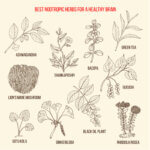Table of Contents
A cluneal nerve block is a procedure that relieves chronic lower lumbar back pain. The pain in this area usually radiates to the upper buttocks. Lower back problems are one of the most common causes of missed work in the United States. Patients should discuss any other conditions, such as high blood pressure, with their doctor before having the procedure. This procedure can also cause complications in certain conditions, such as active infection.
Dissection of cluneal nerve
Medial superior cluneal nerve dissection exposes the cluneal nerve. It may also be modified to expose other superior cluneal nerves. After the patient is positioned prone, local anesthesia is administered to the area suspected of being entrapped. A 5-cm incision is made across the suspected nerve entrapment. Both medial and superior cluneal nerves are exposed and released from entrapment.
A cluneal nerve is a complex group of sensory nerves that run from the lower spine into the buttocks. Dissection of the cluneal nerve can result in a significant injury. While the inferior and middle cluneal nerves are less common, they are no less susceptible to injury. Here are some tips for preventing dissection of the cluneal nerve.
The treatment of cluneal nerve pain may be facilitated by treating the underlying spinal instability. In cases of spinal instability, a Mayo belt or a back brace should be worn to limit full flexion of the lower back. A cluneal nerve block can be performed using anatomical landmarks or ultrasound guidance. Spinal ligament targeted prolotherapy may also be an alternative treatment option for cluneal nerve pain.
There are a few studies that support the dissection of the cluneal nerve. A few decades ago, Strong and Davila published sporadic reports. The study involved 30 patients with referred pain in the leg. However, all the patients who underwent deafferentation had favorable outcomes. The authors stated that the MCNs were thin. Hence, the relationship between the MCN and LPSL has not been completely established.
Variability of cluneal nerve
The proposed management of cluneal nerve pain involves identifying potential causes and eliminating any flaring activities. Physical therapy can be used to help limit the pain by using back braces or Mayo belts, or spinal ligament targeted prolotherapy may be recommended for underlying issues with spine instability. This treatment may also be an alternative to RF or surgery. Surgical management is an option when conservative therapy has failed to relieve the pain.
In a study involving 39 patients, entrapment of the superior or middle cluneal nerve was successfully treated. More than half reported groin and leg symptoms. Anatomical studies of the SCN showed several variations in the run patterns of its branches. The study used 15 cadavers to confirm its anatomical location. Osteofibrous tunnel was also implicated as a cause of cluneal nerve pain.
It is unknown if the relationship between the cluneal nerve and leg symptoms was established as early as the 1950s. Although sporadic reports were published, one study attempted deafferentation of the middle and superior cluneal nerves in five patients with referred pain in the leg. The results were favorable, but the authors did not specify whether or not the MCN was related to the long posterior sacroiliac ligament.
The superior cluneal nerve passes over the iliac crest. The superior cluneal nerve travels through the thoracolumbar fascia and the superior rim of the iliac crest. Sometimes, the superior cluneal nerve becomes constrained in an osseofibrous tunnel. This condition affects other nerves in the body. The medial branch of the superior cluneal nerve may be restricted in an osteofibrous tunnel.
Peripheral nerve stimulation
Radiofrequency therapy has been used to treat cluneal nerve disorders. The procedure involves the delivery of a mild electrical current to the nerves that transmit pain. While the procedure is usually non-destructive and reversible, the chances of significant benefit are dependent on many factors. Before you undergo the procedure, you should consult your GP to discuss your treatment options. It may be a good option for you if you've had unsuccessful treatment in the past.
A diagnosis of superior cluneal neuralgia is important because the pain can mimic low back pain. The pathomechanics of SCN vary, but include direct injury, myofascial compression, abnormal muscle tone, and fibrosis. In one patient, the pain persisted for three years after a laminectomy. She then underwent peripheral nerve stimulation (PNS), and reported significant long-term pain relief.
Another treatment option for chronic cluneal pain is a permanent implant. The StimRouter PNS system uses a small gel electrode and an external pulse transmitter, which is the size of a matchbox. The program is worn around the wrist or neck and is recharged at a charging station. Patients can leave the implant in for an extended period of time if they find it effective.
The superior cluneal nerve originates from the upper lumbar spinal nerve roots. It then travels through multiple layers of muscle, including the thoracolumbar fascia and posterior iliac crest. The nerve reaches the gluteus maximus, which is the most frequently affected area of the buttock. The inferior cluneal nerve is often damaged by direct trauma.
A PNS device is implanted by a specially trained physician. This outpatient procedure usually takes less than an hour. Because the PNS device is so small and incredibly small, it can be implanted almost painlessly. During the procedure, patients are kept in a mild sedative, and the clinician uses a local anesthetic to numb the skin near the nerve. Compared with other electrical stimulation systems, the PNS device does not cause any side effects.
Treatment
In cases of entrapment of the superior cluneal nerve, the excess branches are removed by small incisions with local anesthesia. Symptoms are often accompanied by pain and burning and may be due to degenerative disc disease, scar tissue, or metabolic factors. In some cases, the entrapped nerve is causing symptoms such as lumbar radiculopathy or sacroiliac joint pain. Treatment of cluneal nerve entrapment includes medications, surgical release, or radiofrequency ablation.
Several studies have been conducted to determine whether a nerve block injection can successfully treat SCN disorders. The results were evaluated using a VAS (visual analog scale). A maximum VAS score was 100 mm. It is important to follow the instructions carefully when using nerve block injections. For example, it is not a good idea to use a needle that has a short lifespan. Using a needle with a small needle and a small catheter may result in a worse outcome.
A fusion or implant failure may be the cause of low back pain. Other possible causes include malalignment, infection, and adjacent segment disease. SCNEN is a clinical entity that should be diagnosed before surgery for intractable low back pain. In this study, we analyzed the frequency of this neuropathy and its clinical course in 383 patients who underwent surgery for LBP between May 2016 and August 2017.
Surgery is another treatment option for cluneal nerve pain. Radiofrequency ablation or radiofrequency resection of the cluneal nerve may reduce inflammation and promote healing. However, surgical procedures may not be as effective. The best treatment for this condition relies on reducing spinal instability and reducing the pain. Therefore, if surgical treatment is not an option, prolotherapy may be an alternative.
Physical examination may help determine if the superior cluneal nerve is the cause of the pain. A physical examination may reveal paresthesia or maximal tenderness over the superior cluneal nerve. Additionally, pain reproduction when stretching muscles along the superior cluneal nerve plane may be an indication of a more serious neuromuscular disorder. If surgery is not the only treatment option for cluneal nerve pain, peripheral nerve stimulation may be an option.



Comments
Loading…